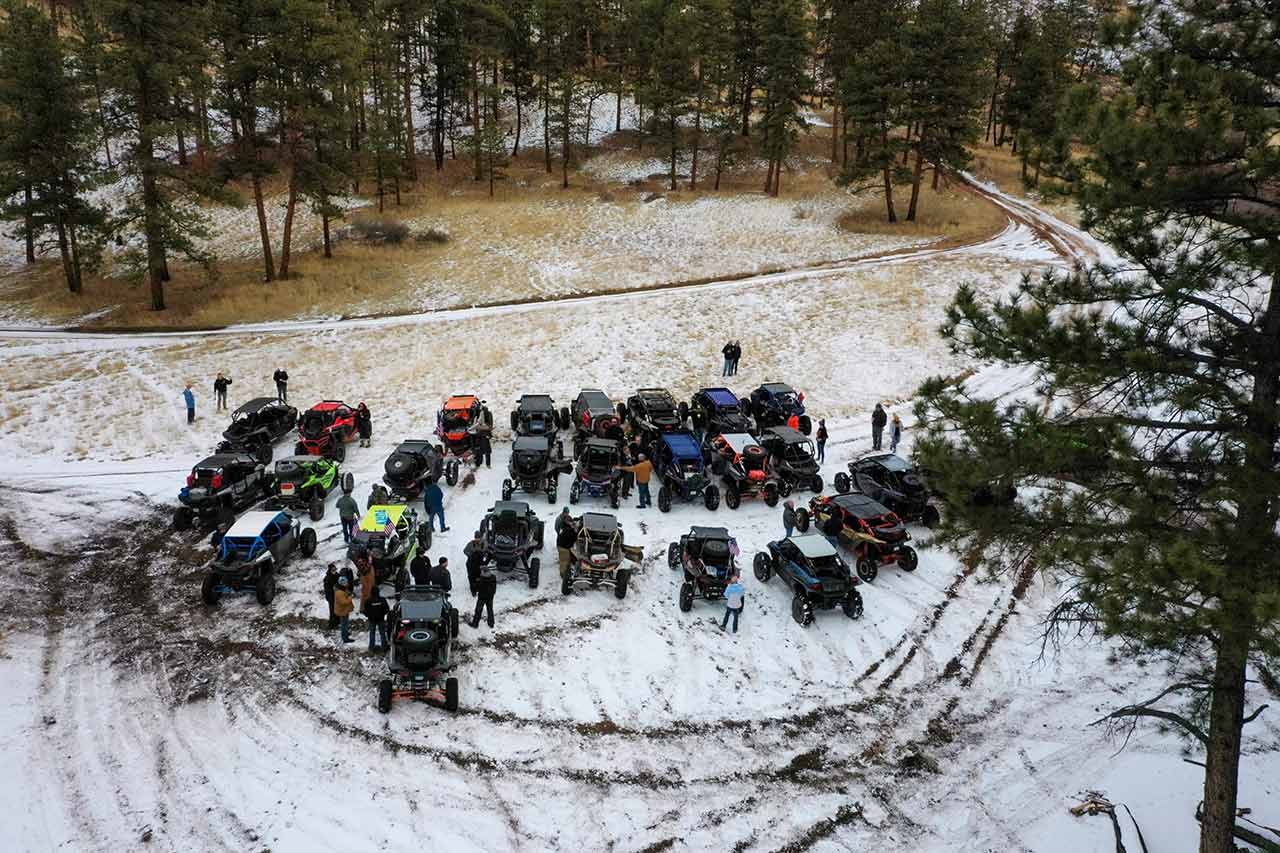Group UTV rides are all about camaraderie, exploring off-road terrain, and ensuring every participant has a safe, enjoyable experience. Mastering the art of leading and following in a group enhances safety, builds confidence among riders of varying experience levels, and fosters a spirit of teamwork. Let’s explore the fundamental strategies that will help you organize and participate in a successful group ride.

Understanding Group Riding Dynamics: What You Need to Know
When you join a group ride or organize one yourself, your ability to navigate the trails with clear communication and mutual respect can make or break the outing. Proper group etiquette, signals, and spacing are crucial to avoiding accidents and improving everyone’s overall experience. Check out these essential UTV group riding techniques to ensure you’re well-prepared before you hit the trails.
- Communication Breakdowns: Even if everyone in the group is experienced with UTVs, misunderstandings can occur. Without proper hand signals or radio communication, sudden stops or turns can result in collisions or confusion.
- Uneven Skill Levels: In many group settings, you’ll have beginners, intermediates, and advanced riders. Leaders should account for these differences in skill and confidence, ensuring no one is pushed beyond their limits.
- Safety Hazards: Rough terrains, unexpected obstacles, and changing weather are common challenges. If leaders and followers do not maintain vigilance, minor mishaps can escalate into more serious incidents.
Key Techniques for Leading and Following in UTV Group Rides
To ensure every member of your UTV outing stays secure and has fun, consider these core methods and tools. Equipping yourself with proper safety equipment for UTV group rides further protects everyone on board.
- Pre-Ride Checks – Before any ride, perform a comprehensive inspection of every machine. Check tire pressure, fluid levels, brakes, and lights so potential mechanical failures don’t jeopardize your group’s safety.
- Setting a Realistic Pace – The group leader should start slowly, allowing all riders to warm up and become comfortable. Adjust your speed according to the slowest rider, ensuring no one is left behind.
- Maintaining Line of Sight – Each rider should keep the next UTV in view, especially around tight corners or rugged terrain. This technique helps prevent breakaways and makes it easier to signal hazards or stops.
- Establishing Clear Signals – Hand signals or communication devices are vital for relaying instructions quickly. Agree on basic signals—such as slowing down, needing a break, or indicating obstacles—before you set off.
Putting It into Practice: Steps for Successful UTV Group Riding
Once you’ve covered the fundamentals, it’s time to put them into action. To further refine your expertise, explore these expert riding tips for group UTV adventures.
- Start Small and Local – If you’re new to group rides, begin with shorter trails and fewer participants. This helps build your confidence and teaches you how to coordinate effectively with a small team.
- Encourage Rider Feedback – Leaders should regularly check in with followers during breaks. Ask if the pace is comfortable, if anyone needs assistance, or if route conditions are too challenging.
- Rotate Leadership Roles – When comfortable, let different members of the group take the lead. This practice sharpens everyone’s leadership skills and offers fresh perspectives on pacing and trail navigation.
- Post-Ride Debrief – After the ride, gather your group to discuss successes and areas of improvement. A quick conversation helps solidify lessons learned and keeps future adventures safer.
Best Practices for Leading and Following in Group UTV Rides
- Plan for Emergencies: Carry a well-stocked first-aid kit, tools, and spare parts. Share contact information and have a plan for communicating if someone becomes separated.
- Respect Local Rules: Stay on designated trails, obey speed limits, and respect private property to protect the environment and preserve riding privileges.
- Watch the Weather: Sudden changes can make a trail far more dangerous. Monitor forecasts and be prepared to adjust plans or turn back if conditions worsen.
- Stay Alert: Keep an eye on the rider behind you. If they slow down or appear to struggle, reduce your speed and communicate with the rest of the group.
Seeking Further Improvement and Expert Guidance
If you notice persistent skill gaps in your group or want specialized coaching, consider professional guidance for UTV group riding. Experienced instructors can help you master advanced techniques and build confidence in even the toughest conditions.
Remember, practice makes perfect. Continue learning, try out new trails, and challenge yourself at a comfortable pace. Over time, you’ll gain the experience necessary to lead and follow on any adventure confidently.
Main Points to Remember
- Consistency and Communication: Effective signals, pace-setting, and regular check-ins create an enjoyable, cohesive group ride.
- Safety and Preparedness: Proper gear, pre-ride checks, and emergency plans reduce risks for everyone.
- Continual Improvement: Every ride offers a learning opportunity. Hone your skills, encourage feedback, and consider professional help when needed.
By focusing on these best practices, you’ll enhance the overall ride quality for you and your companions. It’s all about enjoying the thrill of the trails responsibly, creating memories, and forging bonds that make every group adventure well worth the journey.
